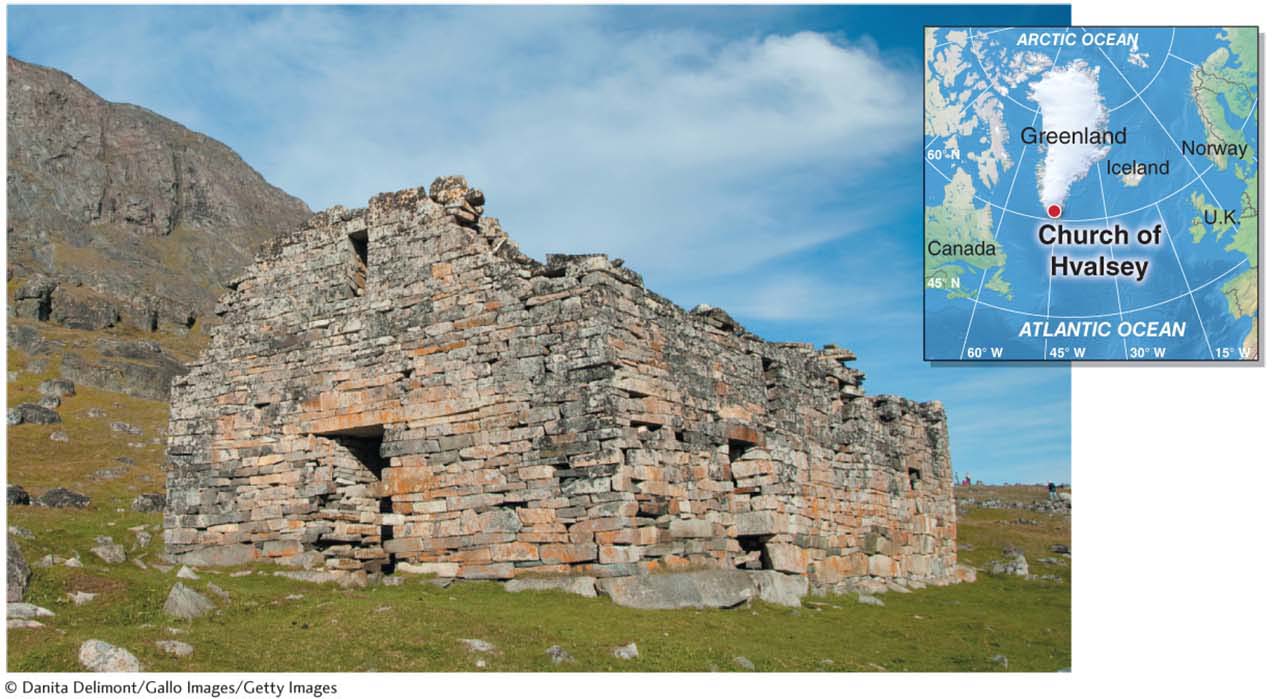The Changing Climate
6

LIVING PHYSICAL GEOGRAPHY
What factors cause Earth’s climate to change?
Was Superstorm Sandy a result of anthropogenic climate change?
How do scientists reconstruct Earth’s ancient climates?
Are people causing climate change?
THE BIG PICTURE
Earth’s climate system changes naturally, but it is also changed by human activities. Addressing anthropogenic climate change is a challenging and ongoing task.
LEARNING GOALS
After reading this chapter, you will be able to:
6.1
Identify the major parts of the climate system and distinguish between climate forcing factors and climate feedbacks.
6.2
Discuss the reasons why climate changes and list the factors that cause it to change.
6.3
Compare the long-
term and short- term carbon cycles and describe the role of human activity in changing those cycles. 6.4
Weigh the evidence of an anthropogenic greenhouse effect in the atmosphere and describe its consequences.
6.5
Assess different approaches to tackling climate change.
THE HUMAN SPHERE:
The Greenland Norse
THE SCANDINAVIAN NORSE (or Vikings) settled coastal southern Greenland in the 980s CE and developed a thriving society based on livestock rearing and trade. Perhaps between 3,000 and 5,000 Norse lived on Greenland at the peak of the settlement period. Active trade went on among Greenland, Iceland, and mainland Europe until the late 1300s. Greenland was always too cold to grow grain crops, so settlers relied on grain imports from mainland Europe. The Greenland Norse traded polar bear hides, walrus ivory, butter, and wool for grain and other commodities from northern Europe that they could not make or grow, such as nails and wood.
For four centuries, the Norse thrived in Greenland. They colonized Greenland during the Medieval Warm Period, a naturally warm period that extended from about 950 to 1250 CE and was felt mostly in the Northern Hemisphere. Unfortunately for the Greenland Norse, the Little Ice Age soon followed, and conditions in Greenland rapidly deteriorated. The Little Ice Age, a natural cooling period that extended from about 1350 to 1850, was also felt mostly in the Northern Hemisphere.
Medieval Warm Period
A naturally warm period from about 950 to 1250 CE; felt mostly in the Northern Hemisphere.
Little Ice Age
A natural cooling period from about 1350 to 1850 CE; felt mostly in the Northern Hemisphere.
Soon sea ice made it difficult to travel by boat to trade with Europe. Worse, it became too cold for the Norse to grow food for themselves or for their livestock. The last written record of the Greenland Norse was a marriage document created in 1408. After that time, the Norse abandoned the Greenland settlements. They probably left for Iceland and mainland Europe, leaving behind gravesites and stone ruins (Figure 6.1).

In this chapter, we explore Earth’s climate system and the factors that cause it to change naturally. Then we explore patterns of climate change on time scales ranging from millions of years to decades. Finally, we examine the role of human activity in modifying the chemistry of the atmosphere, the resulting climate changes, and what can be done to address them.